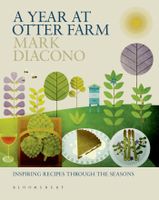Advertisement
The forest garden
Appears in
By Mark Diacono
Published 2014
A forest garden turns the idea of a normal vegetable garden on its head. Rather than being predominantly annual veg, planted and grown almost in two-dimensional plan view, with exposed soil between the plants, a forest garden mimics a natural woodland. It is designed in integrated, complementing tiers, from the subterranean, through the ground cover and low herbaceous layers, to shrubs and up into the tree canopy, each linked by climbers and interplanted to maximise mutual benefit.
Forest gardens are mainly comprised of perennials - essentially, plants that live longer than a year - which does away with the usual veg patch cycle of sowing, hoeing and watering. Once established, perennials tend to grow strongly and usually very early in spring - they’re not busy trying to grow and establish a root system as annuals are. This, and their inclination to draw low in the soil profile for their nutrients and water, makes perennials (and a garden in which they dominate) more resilient and less demanding than annual veg.

